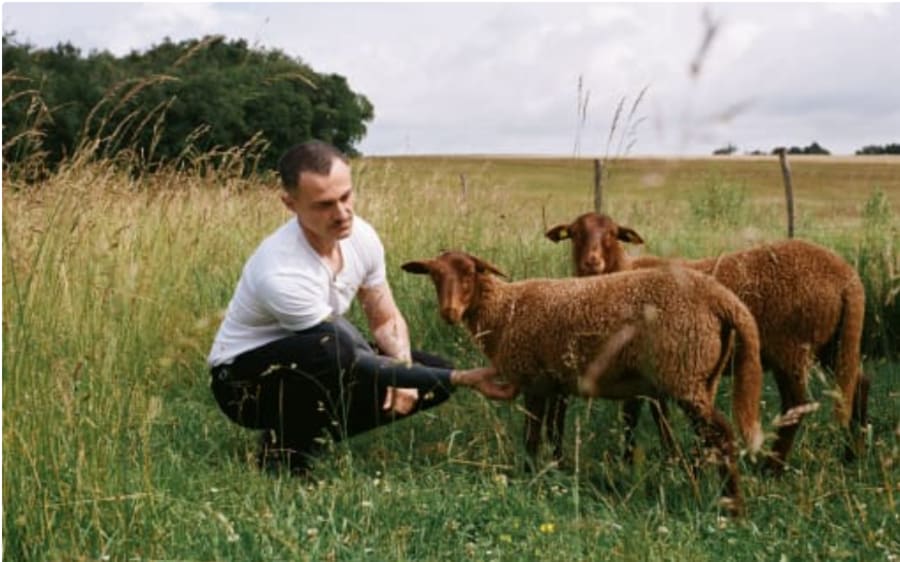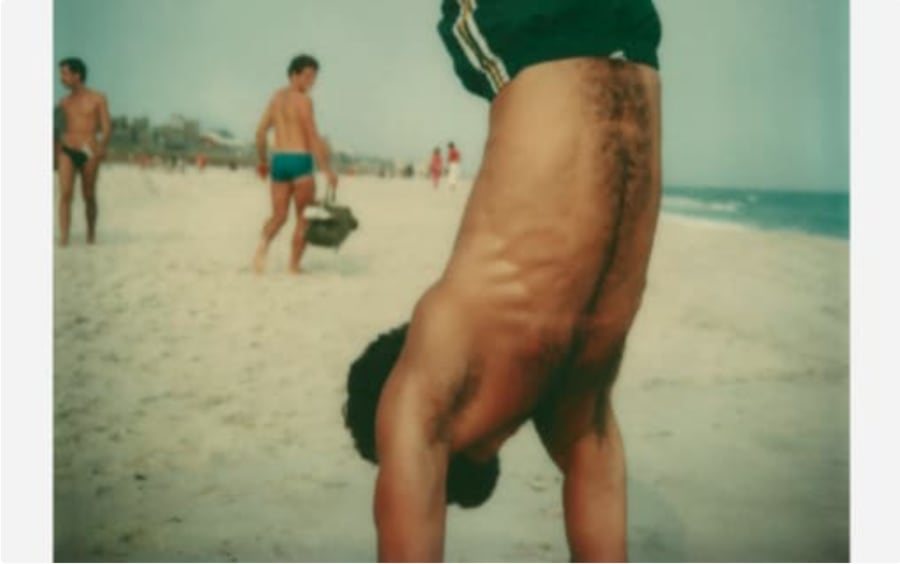Djabril Boukhenaïssi’s compositions have the color of memories. Between the purples, browns, and blues, blank spaces reveal the raw canvas support – like traces of oblivion or distant reminiscences. At the age of 14, Boukhenaïssi was dreaming of attending the École des Beaux-Arts, which he visited with his family when they were in Paris. He graduated six years ago, after studying with Djamel Tatah, whose images of solitude have probably left their mark on the atmosphere of Boukhenaïssi’s works. During those years, he frequently visited the Musée du Louvre to draw inspiration from the masters. Today, he fully integrates printmaking within his painting practice.
Boukhenaïssi is an avid reader. When he talks about his canvases, usually made up of a few lightly applied strokes of paint, he is quick to cite Joris-Karl Huysmans or Virginia Woolf. These figures nourish him just as much as his fellow artists. In fact, narrative is often part of his exhibitions – not a fixed, closed one, but a narrative field opened up by images. For a recent project, he drew inspiration from a scene in Woolf’s novel, The Waves (1931), from which he borrowed the idea of a moth bursting into a country house at night. This year, during a residency in Arles, as the first winner of the Art & Environment Prize created by Lee Ufan Arles and Maison Guerlain, Boukhenaïssi once again turned his attention to darkness and its obliteration by city lights – something which leads to the disappearance of many insects. Rainer Maria Rilke’s Poems to Night (1916), along with the words of Nikolai Gogol and Mikhail Bulgakov, appear in his moths-turned-landscapes. The lights he evokes are also those of the 18th century.
Djabril Boukhenaïssi
‘À ténèbres’
Lee Ufan Arles
Until September 1, 2024
Djabril Boukhenaïssi is represented Mariane Ibrahim (Chicago, Paris, Mexico City) and galerie Sator (Romainville, Paris).
Anaël Pigeat is an art critic, editor-at-large of The Art Newspaper, journalist for Paris Match, and curator.
English translation: Art Basel.
Caption for top image: Portrait of Djabril Boukhenaïssi, 2024.© art_beats - Felix von Boehm.
Published on July 10, 2024.


